Malcolm R. Campbell's Blog, page 37
January 23, 2023
The shootings of the day
Gun violence is a contemporary global human rights issue. Gun-related violence threatens our most fundamental human right, the right to life.
Gun violence is a daily tragedy affecting the lives of individuals around the world. More than 500 people die every day because of violence committed with firearms.
Anyone can be affected by firearm violence but in certain situations gun violence disproportionately impacts communities of colour, women and other marginalized groups in society. – Amnesty International
 You can track shootings by type and location at the Gun Violence Archive. The information here is updated daily and includes cumulative data throughout the year. All of the information here is disturbing, especially the listing for what’s happened during the last 72 hours. I appreciate the work of this group, though I find it sad that we need this group. Yet, according to Amnesty International, “There are 8 million new small arms and up to 15 billion rounds of ammunition produced each year.”
You can track shootings by type and location at the Gun Violence Archive. The information here is updated daily and includes cumulative data throughout the year. All of the information here is disturbing, especially the listing for what’s happened during the last 72 hours. I appreciate the work of this group, though I find it sad that we need this group. Yet, according to Amnesty International, “There are 8 million new small arms and up to 15 billion rounds of ammunition produced each year.”
Personally, I’m tired of hearing that if we restrict gun ownership and the right to carry guns, only criminals will have guns. And yet, most of the mass shootings appear to be caused by individuals considered non-criminals prior to the shootings.
The problem has a lot of socio-economic overlays, but it’s generally believed that the precipitating factor is easy access to legal and illegal guns.
What surprises me is the fact that we–as a nation–put up with it. I suppose we’re burying our heads in the sand with the viewpoint that if the violence doesn’t kill us or people we know then it’s not our problem. And yet, it is, because the failure to enact legislation that will put a dent in gun violence is allowing it to happen. In that regard, most of us are at fault.
–Malcolm
January 22, 2023
Writers need to pace themselves (or else)
I try to write 100 words a day come hell or high water.
 If I were to write more words, my writing career would be compromised. Why? I wouldn’t be pacing myself. I’d be like an old Chevy racing at Daytona and that would mean the engine would soon be toast. Well, not actual toast, but you know what I mean. A blown engine in a Chevy is a bad thing. A worse thing is a blown engine in oneself that happens if you work harder than you should. I’m very superstitious and so I won’t tempt fate by writing 101 words.
If I were to write more words, my writing career would be compromised. Why? I wouldn’t be pacing myself. I’d be like an old Chevy racing at Daytona and that would mean the engine would soon be toast. Well, not actual toast, but you know what I mean. A blown engine in a Chevy is a bad thing. A worse thing is a blown engine in oneself that happens if you work harder than you should. I’m very superstitious and so I won’t tempt fate by writing 101 words.
I did NaNoWriMo some years ago. I wrote all the words I needed but was a nervous wreck, fast-tracked to boot hill. After doing it, I wondered just what was the rush anyhow. If you take years to complete a novel you have years in which you can hope that reviewers and readers will love it, somebody will nominate it for a Pulitzer Prize, and the movie will bring in $100000000 and a truckload of glamorous movie stars.
If you don’t pace yourself, the book will come out sooner, and all the hope you could have had by writing slowly is suddenly toast. Not actual toast, but you know what I mean. Nobody reads the book and those who don’t read it refuse to write loving but fictitious reviews that say the novel is the best thing since sliced bread.
Another problem with writing too fast is discovering 50,000 words into the book that you’ve written past what your muse told you to write. Now your book–and probably you–is stuck in an Area 51 status which, as we have seen, brings the Feds to your house, and let me clue you in that in these woke times, they’re no longer whistling Dixie. They (the Feds) have hard questions like “when did you realize the novel you were writing was being beamed down from the mother ship?”
You better not respond by saying you just thought your muse had been drinking too much Jolt Cola. Truth be told, a lot of writers drink too way too much Jolt Cola because they think anonymity might be gaining on them. And they’re right because excessive use of Jolt Cola causes them to write really bad stuff like, “I’ve kissed a prince, Mom. I hope it doesn’t turn into a frog.”
Suffice it to say, writers should never exceed the posted speed limit because the grammar police are always hiding behind billboards for Rice Krispies and other innocent products waiting to pull over anyone who seems to be powered by Jolt Cola, a mother ship, delusions of grandeur, or bad writing advice from the dark web.
If you pace yourself, you’ll always be in the clear. That’s my story and I’m sticking to it until I hear a more expedient story.
–Malcolm
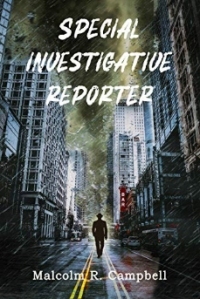 My only NaNoWriMo book was “Jock Stewart and the Missing Sea of Fire” (now titled “Investigative Reporter”) and the AudioFile Magazine reviewer said, “a vehicle for sex, cigarettes, steak, and zinfandel.” All good, but it sounds like a review for “Fifty Shades of Grey.”
My only NaNoWriMo book was “Jock Stewart and the Missing Sea of Fire” (now titled “Investigative Reporter”) and the AudioFile Magazine reviewer said, “a vehicle for sex, cigarettes, steak, and zinfandel.” All good, but it sounds like a review for “Fifty Shades of Grey.”
January 21, 2023
What Happens Here Can Only Happen Here
 “A particular place in the land is never, for an oral culture, just a passive or inert setting for the human events that occur there. It is an active participant in those occurrences. Indeed, by virtue of its underlying and enveloping presence, the place may even be felt to be the source, the primary power that expresses itself through the various events that unfold there.” – David Abram
“A particular place in the land is never, for an oral culture, just a passive or inert setting for the human events that occur there. It is an active participant in those occurrences. Indeed, by virtue of its underlying and enveloping presence, the place may even be felt to be the source, the primary power that expresses itself through the various events that unfold there.” – David Abram
The modern world often obscures the importance and influence of a place because in knowing about the events of many places at the same time via news and social media, we often focus on similarities while ignoring the differences. It’s human nature, I think, to look for common themes and even to copy those we like best leading, among other things, to build the same stores and restaurants across the country because they are profitable by virtue of being known as well as a comfort to both the residents and those traveling through town. Homogenizing everything we can not only destroys local culture and exciting differences but makes for a very sterile way of life by trying to translate the culture of another place into our place where that culture is unnatural.
(I digress when I say that I don’t like this practice, especially when traveling and finding mostly chain restaurants dominating the scene to the detriment of local culture and local restaurants. I can’t imagine visiting New Orleans, for example, and only eating the same fast food I eat at home.)
If you read and/or write magical realism, you know already the importance of the place where a real event or fictional story is set, and in knowing, that one understands how the place helps shape the events that happen there. Those events cannot happen anywhere else–no matter how much people might try to copy them–because they depend on the place’s history, culture, geography, and other factors that are unique. One tries through his/her writing to communicate this to the reader subconsciously rather than overtly. You can’t say “The swamp didn’t like Jim.” But when Jim goes into the swamp in your story, you can give the impression that this is true–or that Jim is scared of the swamp and acts differently than he would act if he weren’t scared of it.
It’s hard not to think of the exchange between Luke Skywalker and Yoda, when Luke asks (about the swamp), “What’s in there?” Yoda replies, “Only what you take with you.”
This is true everywhere even though most people won’t acknowledge it.
In looking for similarities between shootings and other crimes, commentators are quick to compare a crime in one place with a crime in another place. They often refer to these as “copycat shootings.” But that can’t be true even if the second perpetrator was aware of the first and wanted to duplicate it. He/she lives in a different environment–the Great Plains as opposed to, say, the Everglades–and part of his/her motivation is copying, a factor that wasn’t involved with the first crime.
Focusing on the real or imagined copycat nature of an event will usually lead investigators astray. Storytellers know this and honor the influence of the place on what happens in that place rather than the extraneous fact that similar events might have happened somewhere else. In magical realism, we understand that what happens here can only happen here.
–Malcolm
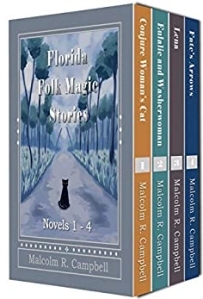 Malcolm R. Campbell is the author of the magical realism novels in the Florida Folk Magic Series. This Kindle set includes all four novels in the series.
Malcolm R. Campbell is the author of the magical realism novels in the Florida Folk Magic Series. This Kindle set includes all four novels in the series.
January 20, 2023
Remembering ‘Twenty Thousand Leagues under the Seas’ by Jules Verne
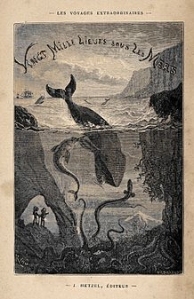 In All the Light We Cannot See, the blind French girl Marie-Laure Leblanc is reading the novel in braille, sometimes alone, sometimes to her uncle, and sometimes into the microphone of an old short-wave radio transmitter. Captain Nemo and his submarine Nautilus become an important motif in the book. For me, the inclusion of Jules Verne’s story was a bit haunting since the novel, and even the Disney movie adaptation released in 1954, was one of my favorite novels. In fact, I think I ended up reading most of Jules Verne’s work.
In All the Light We Cannot See, the blind French girl Marie-Laure Leblanc is reading the novel in braille, sometimes alone, sometimes to her uncle, and sometimes into the microphone of an old short-wave radio transmitter. Captain Nemo and his submarine Nautilus become an important motif in the book. For me, the inclusion of Jules Verne’s story was a bit haunting since the novel, and even the Disney movie adaptation released in 1954, was one of my favorite novels. In fact, I think I ended up reading most of Jules Verne’s work.
I knew the story first from the film because, in 1954, I wasn’t capable of reading a Jules Verne book. That’s just as well inasmuch as the first English translations were a mess.
A friend of mine in grade school also loved the movie, so much that we ended up building a miniature Nautilus in his basement where we gave “tours” of various voyages to adults willing to pay five or ten cents depending on the length of the voyage.
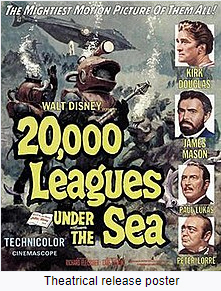 I loved the accuracy of short-wave radio scenes in All the Light We Cannot See because I was once a ham radio operator. I built my own transmitter and used a 1940s-era short-wave receiver. It was always fun late at night, talking to people around the world as well as listening to commercial broadcasts originating thousands of miles away. In those days, DXing was popular and we prided ourselves in identifying commercial broadcasts, telling the stations what we heard, and getting a postcard by mail that verified we had heard the station on the date and time we said we did. I finally gave away that old SuperPro short-wave receiver a few years ago to a ham radio operator who was likely to repair it and get it working again.
I loved the accuracy of short-wave radio scenes in All the Light We Cannot See because I was once a ham radio operator. I built my own transmitter and used a 1940s-era short-wave receiver. It was always fun late at night, talking to people around the world as well as listening to commercial broadcasts originating thousands of miles away. In those days, DXing was popular and we prided ourselves in identifying commercial broadcasts, telling the stations what we heard, and getting a postcard by mail that verified we had heard the station on the date and time we said we did. I finally gave away that old SuperPro short-wave receiver a few years ago to a ham radio operator who was likely to repair it and get it working again.
Best I can tell, the current version of Jules Verne’s novel offered on Amazon might well be the best English translation yet. My feeling is that it’s a lot more accurate than earlier English translations. I know the story only too well because I have lived with it, one way or another, for almost seventy years.
–Malcolm
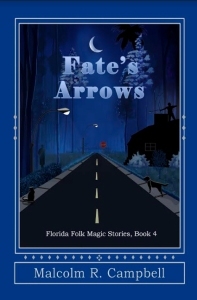 Jules Verne led me into a long-time interest in science fiction novels which ultimately moved into contemporary fantasy. I write now because of him.
Jules Verne led me into a long-time interest in science fiction novels which ultimately moved into contemporary fantasy. I write now because of him.
January 18, 2023
‘The Last Hours of Ancient Sunlight’ by Thom Hartmann
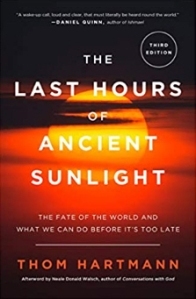 This book had a huge impact on me when it first appeared in 1998. With the exception of a few reviewers’ opinions that the concept really wasn’t new, most of those who read it were excited about the book and the clarity with which it explained that the fossil fuels we’re using now contain the energy of sunlight that plants captured eons ago, long buried in the form of coal and other fossil fuels.
This book had a huge impact on me when it first appeared in 1998. With the exception of a few reviewers’ opinions that the concept really wasn’t new, most of those who read it were excited about the book and the clarity with which it explained that the fossil fuels we’re using now contain the energy of sunlight that plants captured eons ago, long buried in the form of coal and other fossil fuels.
As Hartmann wrote, “In a very real sense, we’re all made out of sunlight. Sunlight radiating heat, visible light, and ultraviolet light is the source of virtually all life on Earth. Everything you see alive around you is there because a plant somewhere was able to capture sunlight and store it.” This reminded me of George Wald’s statement that we carry the stuff of ancient stars within our physical selves.
I enjoyed the book, stuck it on a shelf somewhere, and ultimately forgot about it until two kids listening to a shortwave radio program in Anthony Doerr’s All the Light we Cannot See heard a lecture about the subject of sunlight hidden in fossil fuels. He doesn’t credit Hartmann, so the concept of ancient sunlight has perhaps become so common that we no longer think of it as new or from the writing output of one man twenty-five years ago.
The book was updated in 2004 with an afterword by Neale Donald Walsch (Conversations with God).
From the PublisherWhile everything appears to be collapsing around us – ecodamage, genetic engineering, virulent diseases, the end of cheap oil, water shortages, global famine, wars – we can still do something about it and create a world that will work for us and for our children’s children. The inspiration for Leonardo DiCaprio’s feature documentary movie The Eleventh Hour and soon to be released HBO special Ice on Fire, Last Hours of Ancient Sunlight details what is happening to our planet, the reasons for our culture’s blind behavior, and how we can fix the problem. Thom Hartmann’s comprehensive book is one of the fundamental handbooks of the environmental activist movement. Now with fresh, updated material on our Earth’s rapid climate change and a focus on political activism and its effect on corporate behavior, The Last Hours of Ancient Sunlight helps us understand – and heal – our relationship to the world, to each other, and to our natural resources.
The concepts in the book are still valid and probably more urgent than they were when the book first appeared.
–Malcolm
 Malcolm R. Campbell, a conservationist, and a former mountain climber is the author of paranormal, contemporary fantasy, and magical realism novels and short stories.
Malcolm R. Campbell, a conservationist, and a former mountain climber is the author of paranormal, contemporary fantasy, and magical realism novels and short stories.
January 17, 2023
Re-reading ‘All the Light We Cannot See’ by Anthony Doerr
Okay, I finished reading Micky Spillane’s Kiss Me, Deadly–which ended with a lot of people getting killed–and am now re-reading Anthony Doerr’s book while waiting for my Cormac McCarthy book to arrive. Quite a change of pace moving from rough and tumble private eye stuff to this beautifully written Pulitzer Prize-winning novel.
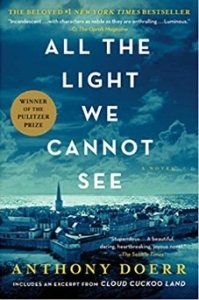 While I enjoy re-reading books, I would prefer reading factory-fresh new books, though neither my budget nor the space in our small house will support the arrival of two or three new books per week. So, like a lot of you (perhaps), I spend more time re-reading than first-time reading.
While I enjoy re-reading books, I would prefer reading factory-fresh new books, though neither my budget nor the space in our small house will support the arrival of two or three new books per week. So, like a lot of you (perhaps), I spend more time re-reading than first-time reading.
As an author, I spend time writing, though oddly enough, I write better when the little grey cells (as detective Poirot always said of his brain) are engaged in an interesting book. The books I read are nothing like the books I write; that means I never have to worry about inadvertent plagiarism. As far as I know, nobody writes like me, so I can’t even accidentally borrow another author’s plots or dialogue.
Doerr has a few blurbs about this book on his website including the comment by “Vanity Fair” that ““Anthony Doerr again takes language beyond mortal limits.” We would all like reviews like that. Sadly, books written by small press authors are never seen by reviewers who write comments like that. We are more or less anonymous and invisible, the upside being that few writers are likely to “borrow” plots and dialogue from our books.
Like most authors, I read better than I write. All The Light We Cannot See is a gem, the kind of work I feel fortunate to have on my shelf to I have something to do at an age when, as some bad writer once said, my get up and go as got up and went.
How about you? Do you find yourself reading cereal boxes or re-reading old stuff on your bookshelf more often than reading something new?
–Malcolm
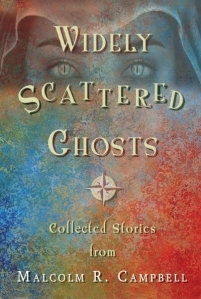 Malcolm R. Campbell is the author of magical realism, paranormal, and contemporary fantasy novels and short stories.
Malcolm R. Campbell is the author of magical realism, paranormal, and contemporary fantasy novels and short stories.
A readers’ advisory for this collection of nine stories forecasts widely scattered ghosts with a chance of rain. Caution is urged at the following uncertain places: an abandoned mental hospital, the woods behind a pleasant subdivision, a small fishing village, a mountain lake, a long-closed theater undergoing restoration, a feared bridge over a swampy river, a historic district street at dusk, the bedroom of a girl who waited until the last minute to write her book report from an allegedly dead author, and the woods near a conjure woman’s house.
In effect from the words “light of the harvest moon was brilliant” until the last phrase “forever rest in peace,” this advisory includes—but may not be limited to—the Florida Panhandle, northwest Montana, central Illinois, and eastern Missouri.
January 16, 2023
Briefly Noted: ‘Kiss Me, Deadly’ by Micky Spillane
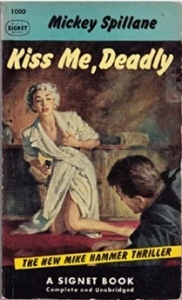 Mike Hammer, Spillane’s private investigator, is perhaps the world’s most hardboiled detective. The critics and even his own editors cringed at Spillane’s work since Hammer was almost as big a thug as those he hunted down. The cover of this book is typical of those on the Mike Hammer novels. But it’s accurate inasmuch as every woman Mike meets wants to sleep with him. Until my brother, Barry slipped a three-novel volume of Spillane novels in with this year’s Christmas gifts, I’d never read a Spillane novel even though I do like noir. I think Mike Hammer is too rough for noir, though one could debate either side of that point.
Mike Hammer, Spillane’s private investigator, is perhaps the world’s most hardboiled detective. The critics and even his own editors cringed at Spillane’s work since Hammer was almost as big a thug as those he hunted down. The cover of this book is typical of those on the Mike Hammer novels. But it’s accurate inasmuch as every woman Mike meets wants to sleep with him. Until my brother, Barry slipped a three-novel volume of Spillane novels in with this year’s Christmas gifts, I’d never read a Spillane novel even though I do like noir. I think Mike Hammer is too rough for noir, though one could debate either side of that point.
“Mike Hammer gives a lift to a beauty on the run from a sanitarium—but their joyride is cut short by two dark sedans full of professional killers, who knock the detective out cold. When he wakes up, his car has been rolled off a cliff, with his mysterious passenger still inside it. The feds take his gun away on suspicion, but Hammer’s not about to let that stop him. He’s on the hunt for the men who wrecked his ride and killed a dame in cold blood—and he’s going to teach them that armed or not, crossing Mike Hammer is the last thing you should ever do.”
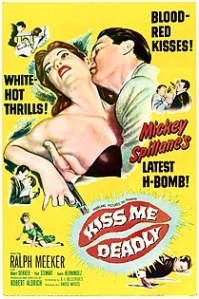 The book was made into a film by the same name in 1955 starring Ralph Meeker as Hammer. According to Wikipedia, “Critics have generally viewed the film as a metaphor for the paranoia and fear of nuclear war that prevailed during the Cold War era. “The great whatsit,” as Velda [Mike’s assistant] refers to the object of Hammer’s quest, turns out to be a mysterious valise, hot to the touch because of the dangerous, glowing substance it contains, a metaphor for the atomic bomb. The film has been described as “the definitive, apocalyptic, nihilistic, science-fiction film noir of all time – at the close of the classic noir period.” A leftist at the time of the Hollywood blacklist, Bezzerides denied any conscious intention for this metaphor in his script, saying that “I was having fun with it. I wanted to make every scene, every character, interesting.”
The book was made into a film by the same name in 1955 starring Ralph Meeker as Hammer. According to Wikipedia, “Critics have generally viewed the film as a metaphor for the paranoia and fear of nuclear war that prevailed during the Cold War era. “The great whatsit,” as Velda [Mike’s assistant] refers to the object of Hammer’s quest, turns out to be a mysterious valise, hot to the touch because of the dangerous, glowing substance it contains, a metaphor for the atomic bomb. The film has been described as “the definitive, apocalyptic, nihilistic, science-fiction film noir of all time – at the close of the classic noir period.” A leftist at the time of the Hollywood blacklist, Bezzerides denied any conscious intention for this metaphor in his script, saying that “I was having fun with it. I wanted to make every scene, every character, interesting.”
Once I finish this three-novel volume–which includes Kiss Me, Deadly–I don’t have any plans to read any of the other stories in this twenty-six-book series. I’m glad I read the novels in this three-novel book because I’d always wondered about Mike Hammer. Now I know. Finding out was part of my education.
–Malcolm
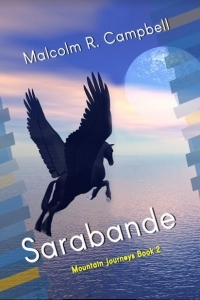 Malcolm R. Campbell is the author of magical realism and contemporary fantasy novels and short stories. “Sarabande” is the sequel to “The Sun Singer. Both novels are set in Glacier National Park.
Malcolm R. Campbell is the author of magical realism and contemporary fantasy novels and short stories. “Sarabande” is the sequel to “The Sun Singer. Both novels are set in Glacier National Park.
January 14, 2023
Sure, I eat collard greens
 “Collard greens are a staple vegetable in Southern U.S. cuisine. They are often prepared with other similar green leaf vegetables, such as spinach, kale, turnip greens, and mustard greens in the dish called “mixed greens”. Typically used in combination with collard greens are smoked and salted meats (ham hocks, smoked turkey drumsticks, smoked turkey necks, pork neckbones, fatback or other fatty meat), diced onions, vinegar, salt, and black pepper, white pepper, or crushed red pepper, and some cooks add a small amount of sugar. Traditionally, collards are eaten on New Year’s Day, along with black-eyed peas or field peas and cornbread, to ensure wealth in the coming year. Cornbread is used to soak up the “pot liquor”, a nutrient-rich collard broth. Collard greens may also be thinly sliced and fermented to make a collard sauerkraut that is often cooked with flat dumplings.” Wikipedia
“Collard greens are a staple vegetable in Southern U.S. cuisine. They are often prepared with other similar green leaf vegetables, such as spinach, kale, turnip greens, and mustard greens in the dish called “mixed greens”. Typically used in combination with collard greens are smoked and salted meats (ham hocks, smoked turkey drumsticks, smoked turkey necks, pork neckbones, fatback or other fatty meat), diced onions, vinegar, salt, and black pepper, white pepper, or crushed red pepper, and some cooks add a small amount of sugar. Traditionally, collards are eaten on New Year’s Day, along with black-eyed peas or field peas and cornbread, to ensure wealth in the coming year. Cornbread is used to soak up the “pot liquor”, a nutrient-rich collard broth. Collard greens may also be thinly sliced and fermented to make a collard sauerkraut that is often cooked with flat dumplings.” Wikipedia
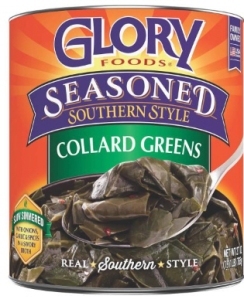 If you grow up in the South, sooner or later you’ taste collard greens. I love them, just as I also love spinach and mustard greens. My mother never cooked them because she grew up in the midwest and was familiar with midwestern foods. I always wanted to try new things and was the first (and only) person in the family to become addicted to boiled peanuts and stalks of sugar cane we chewed while walking down the street.
If you grow up in the South, sooner or later you’ taste collard greens. I love them, just as I also love spinach and mustard greens. My mother never cooked them because she grew up in the midwest and was familiar with midwestern foods. I always wanted to try new things and was the first (and only) person in the family to become addicted to boiled peanuts and stalks of sugar cane we chewed while walking down the street.
My wife who, unlike me, was born in the South, doesn’t like collard greens. So I buy mine at the store in cans. Dump the stuff out of a can, heat them on the stovetop, and they’re ready to eat. The same does for Hoppin John which, you guessed it, my wife doesn’t like either. It’s a nice mix of black-eyed peas, pork, and onions.
I like most Southern goods except for crawfish.
A lot of people make fun of Southern food, especially grits. I don’t understand that and figure most of the people making fun of grits have never shrimp and grits, a great low country dish. That goes well with a side of collards.
Plus, no matter what people say, the best fried chicken comes from the South.
–Malcolm
 Malcolm R. Campbell is the author of the Florida Folk Magic Series set in the Florida Panhandle of the 1950s.
Malcolm R. Campbell is the author of the Florida Folk Magic Series set in the Florida Panhandle of the 1950s.
January 13, 2023
Friday the Thirteenth: What Can Possibly Go Wrong?
Actually, nothing. . . unless you want it to. It’s a day of spiritual feminine energy that men took over and turned into a day of ominous superstitions.
A bit of online research brings you information such as this:
“Before patriarchal times, Friday the 13th was considered the day of the Goddess. It was considered a day to honor the Divine Feminine that lives in us all and to honor the cycles of creation and death and rebirth.
“Friday the 13th was considered a very powerful day to manifest, honor creativity, and to celebrate beauty, wisdom, and nourishment of the soul.” – “The Spiritual Significance of Friday the 13th”
And this: “Friday is also named after Freya, the goddess, and is represented by Venus. Venus is the epitome of feminine energy. Her energy joins us as we approach the weekend to remind us that it is important to rest, relax and play.” – “Friday 13th – A Powerfully Feminine Energy Day”
 And yet, most people appear to accept the fact that there’s something “wrong” with Friday the Thirteenth.” The darned movie strengthened people’s fears but didn’t cause them. The movie’s plot reads like the scary stories we used to tell around the campfire on Boy Scout camping trips. The movie, I think, is best viewed on a dark and stormy Friday the Thirteenth when, if the force is against you, the power will go off and you’ll hear the serial killer in the basement waking up from his/her nap.
And yet, most people appear to accept the fact that there’s something “wrong” with Friday the Thirteenth.” The darned movie strengthened people’s fears but didn’t cause them. The movie’s plot reads like the scary stories we used to tell around the campfire on Boy Scout camping trips. The movie, I think, is best viewed on a dark and stormy Friday the Thirteenth when, if the force is against you, the power will go off and you’ll hear the serial killer in the basement waking up from his/her nap.
Apparently, “13” as an unlucky number comes out of a Norse myth and continues on via the number of people at The Last Supper. We compound the nonsense by having no floor 13 in high-rise buildings, and similar “precautions.” Wikipedia informs us that “According to the Stress Management Center and Phobia Institute in Asheville, North Carolina, an estimated 17–21 million people in the United States are affected by a fear of this day, making it the most feared day and date in history. Some people are so paralyzed by fear that they avoid their normal routines in doing business, taking flights or even getting out of bed.”
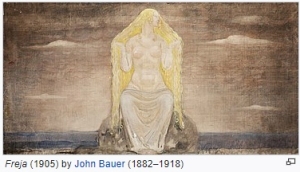 Those who know me (poor dears) know that I believe we create our own reality. So, if you don’t want anything “bad” to happen, then it won’t. Others who know me do not like my “number’s up theory,” which is that if your number isn’t up, nothing untimely will happen on the 13th. If it is up, well, you’re not safe in your own house.
Those who know me (poor dears) know that I believe we create our own reality. So, if you don’t want anything “bad” to happen, then it won’t. Others who know me do not like my “number’s up theory,” which is that if your number isn’t up, nothing untimely will happen on the 13th. If it is up, well, you’re not safe in your own house.
I think that’s a bunch of hooey (more or less), though I stayed in my house today because on the 13th a lot of people drive drunk in hopes that zoning out will save them. Or maybe, somebody left the door open at the asylum.
I’d much rather celebrate this day for its pre-patriarchy meanings. I’m pretty sure my opinion isn’t influenced by the fact my granddaughter is named “Freya.”
–Malcolm
 Malcolm R. Campbell is the author of the four books in the Florida Folk Magic Series that begins with “Conjure Woman’s Cat.”
Malcolm R. Campbell is the author of the four books in the Florida Folk Magic Series that begins with “Conjure Woman’s Cat.”
January 12, 2023
‘Rick O’Shay’: blast from the past
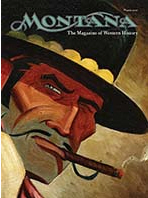 When I was working on yesterday’s post about author/historian Robert Utley–which came to mind when I read some tribute articles about him in “Montana, The Magazine of Western History”–I couldn’t help but notice the picture on the magazine’s cover was the character Hipshot Percussion from the comic strip Rick O’Shay that was syndicated from 1958 to 1981. I wonder how many readers recognized the guy before they read the “on the cover” blurb on the contents page.
When I was working on yesterday’s post about author/historian Robert Utley–which came to mind when I read some tribute articles about him in “Montana, The Magazine of Western History”–I couldn’t help but notice the picture on the magazine’s cover was the character Hipshot Percussion from the comic strip Rick O’Shay that was syndicated from 1958 to 1981. I wonder how many readers recognized the guy before they read the “on the cover” blurb on the contents page.
Rick O’Shay was a small-town western sherrif whose best friend was the gunslinger Hipshot Percussion. I remember Stan Lynde’s comic strip since it appeared in our local paper. I was rather put off by the characters’ names which, as Wikipedia reminds us, “were gambler Deuces Wilde, dance hall owner Gaye Abandon, physician Dr. Basil Metabolism (and his nurse, Ophelia Pulse), gunsmith and Civil War veteran Cap’n Ball, banker Mort Gage and a boy named Quyat Burp. The neighboring Kyute Indian tribe includes Chief Horse’s Neck, his ugly but sweet daughter Moonglow and her persistent suitor Crazy Quilt.”
 According to Wikipedia, “Hipshot is frequently referred to as an ‘outlaw,’ and in one strip he decided to regain his losses at poker by holding up the local bank. Sometimes in the Sunday strip he is shown alone, on horseback, in the Western background, speaking to his Maker, whom he addresses as ‘Boss.’ He does not attend church and prefers to recognize his God in a privately styled fashion.”
According to Wikipedia, “Hipshot is frequently referred to as an ‘outlaw,’ and in one strip he decided to regain his losses at poker by holding up the local bank. Sometimes in the Sunday strip he is shown alone, on horseback, in the Western background, speaking to his Maker, whom he addresses as ‘Boss.’ He does not attend church and prefers to recognize his God in a privately styled fashion.”
I think I read the comic strip last in the Sunday comics, preferring Dick Tracy, Blondie, and Beetle Bailey.
–Malcolm
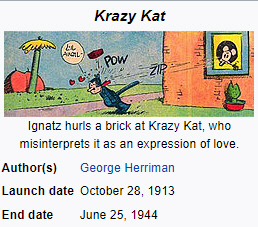 P.S. My favorite comic strip of all time was Krazy Kat. It ran before I was around, but my father had the collected episodes in a book.
P.S. My favorite comic strip of all time was Krazy Kat. It ran before I was around, but my father had the collected episodes in a book.



